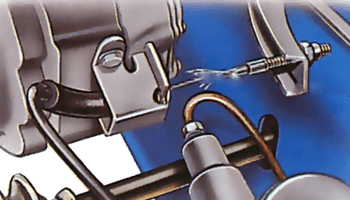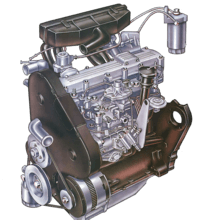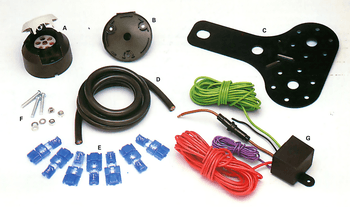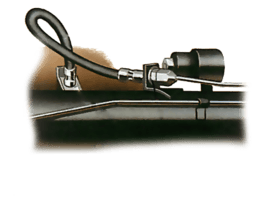Prises électriques
Generally bought in sets, which may vary from about 10 to 56 pieces, socket spanners each have a square drive end that fits into a handle, and a 12-pointed (bi-hex) socket end that fits over a nut or bolt head. A different socket is used for each nut or bolt size.
Socket drives may be 1/4, 3/8, or 1/2in. square, or 3/4in. square for larger sockets. The sockets in a set may be all metric sizes, all imperial, or a mixture. Some sets include a deep 14mm socket for sparkplugs, or they can be bought separately.
A socket set may include a swivelling handle or universal joint, a reversible ratchet handle, a sliding T-bar, an extension bar and a cranked speed brace.
The advantage of sockets and handles is their ability to reach awkward places. They can also be used with a torque wrench. Their use may be limited by the depth of the socket, which may not reach over a long protruding bold, but extra-deep sockets are obtainable.
A socket wrench is a type of wrench that has a socket attached at one end, usually used to turn a fastener.
The most prevalent form is the ratcheting socket wrench, often called a ratchet. A ratchet is a hand tool in which a metal handle is attached to a ratcheting mechanism, which attaches to a socket, which in turn fits onto a type of bolt or nut. Pulled or pushed in one direction, the ratchet loosens or tightens the bolt or nut attached to the socket. Turned the other direction, the ratchet does not turn the socket but allows the ratchet handle to be re-positioned for another turn while staying attached to the bolt or nut. This ratcheting action allows the fastener to be rapidly tightened or loosened in small increments without disconnecting the socket plus socket wrench from the fastener. A switch is built into the ratchet head that allows the user to apply the ratcheting action in either direction, as needed, to tighten or loosen a fastener.
The sockets are attached to the ratchet through a square fitting (called the drive) that contains a spring-loaded ball detent mechanism to keep the sockets or extensions in place. The drive on the ratchet—which comes in standard sizes of 1/4", 3/8", 1/2", 3/4", and 1" (a de facto international standard with no metric equivalents)—allows a wide variety of socket types and sizes to attach to a given ratchet. Some ratchets have quick release buttons on their top for quick socket release. The ratchet handle supplies the mechanical advantage needed by the user to provide the torque needed to loosen or tighten the fastener.
A socket is typically a cylinder which has a female six– or twelve-point recessed opening sized to fit over the common male hexagonal head of a fastener. The opposite end has a standardized square recess to accept the socket wrench's drive size. Male sockets are also produced and are often called bit sockets.
The principal advantage of interchangeable sockets is that, instead of a separate wrench for each of the many different fastener sizes and types, only separate sockets are needed for each size and type. Because of their versatility, nearly all screw and bolt types now have sockets of different types made to fit their bolts or nuts. Sockets often come as a "socket set" with many different sizes or types of sockets to fit the heads of different-sized fasteners. A ratchet of the "set size" is often included with the socket set. Sockets are commonly available in fractional inch and metric sizes, and in short (shallow) and longer (deep) varieties.
Read more on Wikipedia
Cet outil est utilisé dans
If your car has a cable-operated clutch and you find that the gears are difficult to engage, the...
In many ways a diesel engine is less complicated than a petrol engine, with greater reliability ...
A caravan or trailer must, by law, be fitted with certain warning lights. These are wired up to ...
The front wheels on most cars are not set exactly parallel. Instead they point slightly in or sl...
The fluid in the car's braking system runs from the master cylinder to the brakes themselves mai...




